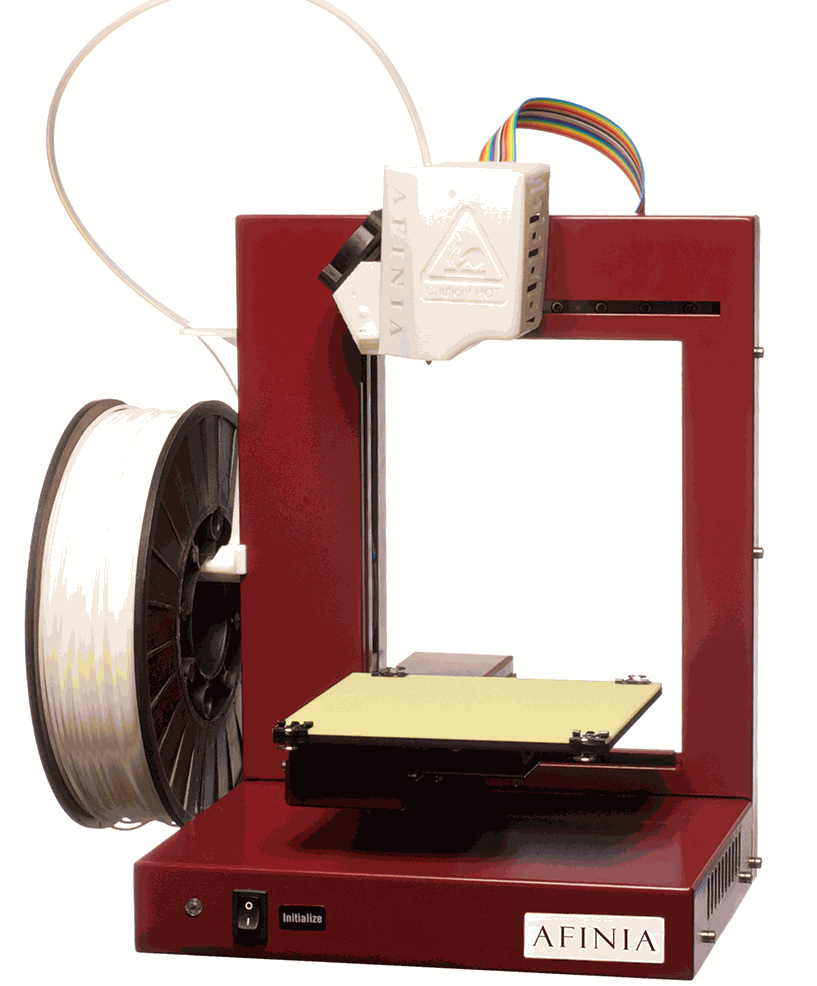



I have used three or four different 3D Printers over the years and they have always focused around the FDM (Fused Deposition Modeling) process. Fused Deposition Modeling extrudes a modeling material (commonly an ABS material) through a nozzle as it is heated to a soft extrusion state. Various nozzle sizes offer different deposition rates and detail. The head then moves the nozzle as it extrudes the ABS, laying down roads and tracks to build one layer of the finished model. Different layer thicknesses can be selected in the software. Then the z axis moves down and another layer is fused to the previous layer. There are software options including, color, density, layer thickness, and support structure. All 3-D printers require a .stl file for printing. The .stl extension was first developed in the late 1980's, and named by 3D Systems after there 3D Printing process called Stereo Lithography.
3D Printer in Action